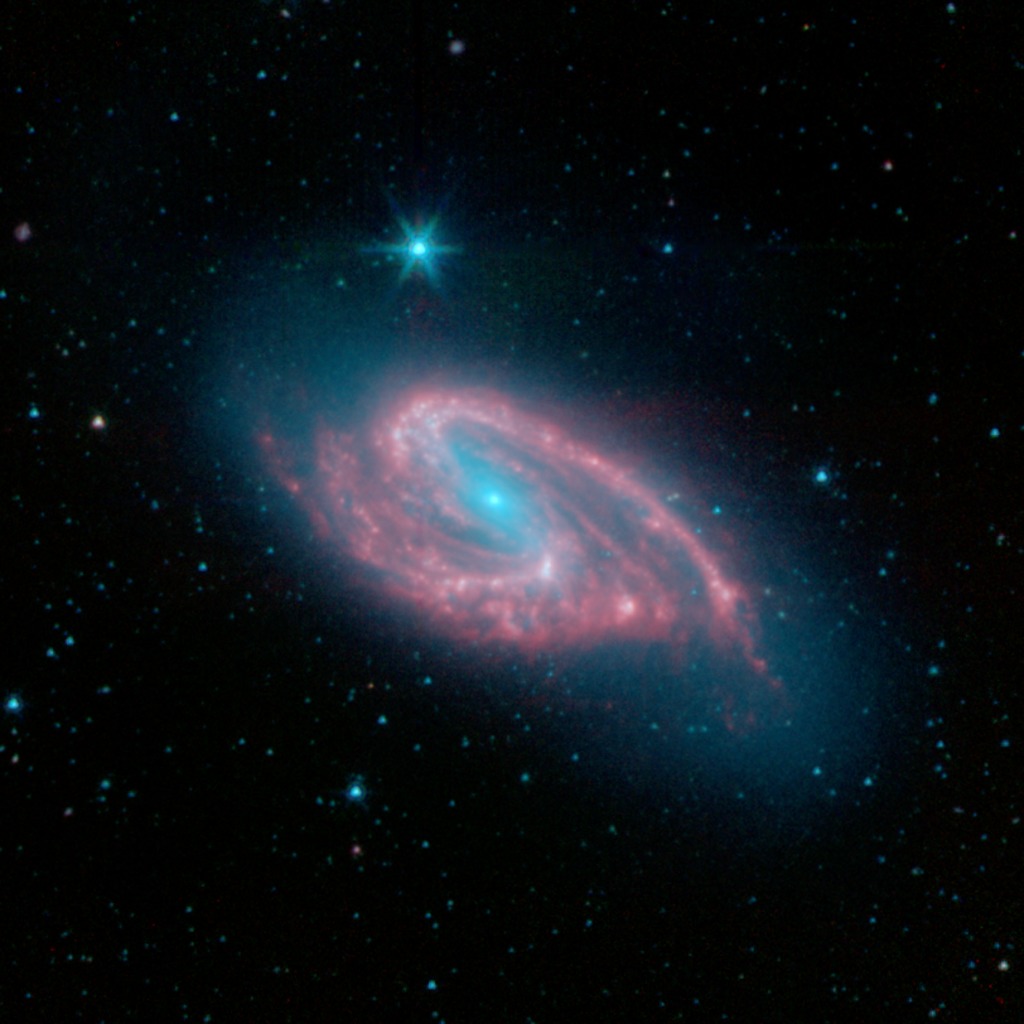
Credit: NASA/JPL-Caltech/R. Kennicutt (University of Arizona) and the SINGS Team
Observation • September 15th, 2005 • sig05-016
sig05-016
This image of spiral galaxy NGC 3627, also known as Messier 66, was captured by the Spitzer Infrared Nearby Galaxy Survey (SINGS) Legacy Project using the telescope's Infrared Array Camera (IRAC).
NGC 3627 is estimated to be 30 million light-years distant and seen towards the constellation Leo. Astronomers suspect that the galaxy's distorted shape is due to its ongoing gravitational interactions with its neighbors Messier 65 and NGC 3628. NGC 3627 is another brilliant example of a barred spiral galaxy, the most common type of disk galaxy in the local Universe. Its blue core and bar-like structure illustrates a concentration of older stars. While the bar seems devoid of star formation, the bar ends are bright red and actively forming stars. A barred spiral offers an exquisite laboratory for star formation because it contains many different environments with varying levels of star-formation activity, e.g., nucleus, rings, bar, the bar ends and spiral arms.
The SINGS image is a four-channel color composite, where blue indicates emission at 3.6 microns, green corresponds to 4.5 microns, and red to 5.8 and 8.0 microns. The contribution from starlight (measured at 3.6 microns) in this picture has been subtracted from the 5.8 and 8 micron images to enhance the visibility of the dust features.
About the Object
- Name
- Messier 66 • M66 • NGC 3627
- Type
- Galaxy > Type > Spiral
- Galaxy > Type > Barred
- Distance
- 30,000,000 Light Years
- Redshift
- 0.002425
Color Mapping
| Band | Wavelength | Telescope |
| Infrared | 3.6 µm | Spitzer IRAC |
| Infrared | 4.5 µm | Spitzer IRAC |
| Infrared | 5.8 µm | Spitzer IRAC |
| Infrared | 8.0 µm | Spitzer IRAC |
Astrometrics
- Position (J2000)
- RA =11h 20m 17.9s
- Dec = 13° 0' 0.1"
- Field of View
- 10.1 x 10.1 arcminutes
- Orientation
- North is 62.6° left of vertical



